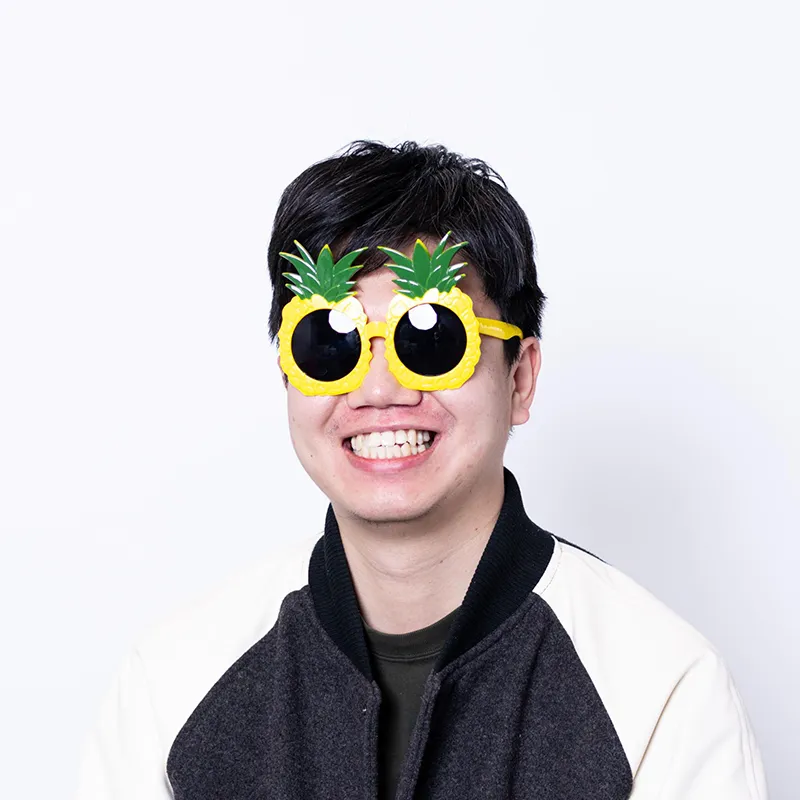Co-designing with youth is crucial for digital thriving

A few weeks ago, I attended an event at Stanford University held in collaboration with the Biden-Harris Administration’s Kids Online Health and Safety Task Force.
I was there as part of the IDEO Play Lab’s ongoing work to leverage design to create digital spaces that help people thrive. We believe that thoughtful digital design is critical, especially as advocates argue there is a correlation between unregulated social media platforms and an ongoing mental health crisis. (In 2021, the CDC found that 42 percent of high school student respondents “experienced persistent feelings of sadness or hopelessness,” a rise from 28 percent in 2011.)
At the event, I was really struck by what Khoa-Nathan Ngo, a psychology major at UCLA and a member of #GoodforMEdia, a youth-led group at the Stanford Center for Youth Mental Health & Wellbeing, had to contribute to the conversation. “You really can’t talk about youth, mental health, and well-being in this day and age without also talking about our relationship to social media,” he says. Ngo and his peers advocate for informed social media use and regulation; They’ve created tool kits for parents, led workshops at schools, and testified to support the Age-Appropriate Design Code Act in California. And they also regularly advise private companies and industry leaders, bringing student voice into the design process. After the event, Khoa-Nathan and I reconnected to talk about the importance of co-designing with youth to create a healthier future that includes digital tools and social media.

Michelle Lee: Nathan, you’re incredibly passionate about your work around social media and mental health. What drew you to this space?
Khoa-Nathan Ngo: During the Covid-19 pandemic, I realized that online, pushback against misinformation mostly happens within English-speaking spaces. In my Vietnamese community, and in Spanish- and Chinese-speaking communities, misinformation around where Covid-19 came from and the safety of the vaccine was rampant. That obviously has huge implications for health outcomes. I realized that what I was seeing on social media affected the health of my community and the nation. I couldn’t ignore that.
ML: We met at an event on digital thriving at the Stanford Internet Observatory, where you were part of the youth panel. Why is it important for companies in the private sector and advocacy groups to involve the youth voice in co-design?
KNN: The best argument for the importance of youth participation in co-design is when you look at what happened when they weren’t part of the process. Youth weren't considered in the social media design process at all, and that led to the situation we’re in now. Youth were only considered consumers, a demographic to engage and profit from. Technology could have been created to promote our well-being and interconnectedness, but what we value wasn’t centered in the design process, which has created a major crisis in terms of our mental health.
ML: You mentioned that the legislative work is very rewarding for you. Tell us more about that.
KNN: In our conversations around social media and mental health, there’s a lot of condemning individuals: Kids are addicted to their phones and they don’t know how to hold a conversation, or parents should control privacy settings. But at the legislative level, we’re able to have bigger conversations: How are these tech companies collecting data? How do they design these products to be addictive? How do they radicalize kids by exposing them to echo chambers? How should children’s data be stored? You can really only have those conversations at the policy level.
ML: What are your thoughts about policymakers? What advice do you have for people in positions of governmental power?
Khoa-Nathan Ngo: My advice is to bring in experts who so badly want to be a part of this conversation. The Age-Appropriate Design Code Act in California did that — part of the policy involved bringing together people from fields including computer science, mental health, and children’s rights to figure out a shared vision. This is a complex problem, and it deserves comprehensive solutions that involve going after companies and their practices directly, not just empowering parents and protecting kids.

ML: I’ve heard you talk about the difference between privileges and rights in the digital space. Can you explain that distinction?
KNN: Of course. Because we all have these apps on our phones, social media platforms can feel like a public and shared space. But at the end of the day, these are private companies, and they can choose what they want to show us. If they privilege popularity-driven content over factual content, that’s their right. The opposite is also true: If their algorithm doesn’t privilege your post, you were not denied your First Amendment right. If you want to post something on your personal account, you have that right, but you don’t have the right to my attention. You have the right to speak, but it’s a privilege to be listened to.
ML: One word that came up repeatedly at the Stanford event was “nuance.” While many focus on the harms of digital media, there are also good things that come out of social media and digital presences, and I’d love for you to touch on that. If I were to say, we’re going to take away all social media, what would your response be?
KNN: If you remove social media because of the harm it has caused, then you’re indicting the people who use social media rather than the people who created these platforms to be addictive. No one said that the most popular content needs to be Photoshopped images or Breitbart. That comes from the platforms’ design, and shutting down social media puts the blame on individuals when it should be on companies. Don’t compromise our ability to politically mobilize, or for marginalized youth to find community. There are so many young people who find joy and love on social media—I don’t think that removing it is better than reforming it.
ML: Given how deep you are in this space, what are your thoughts on flipping social media from a tool that can cause harm to one that can lead to self-acceptance and more authenticity? What are some ways that we could approach that?
KNN: I really like this question, because I like to talk about concrete solutions. I think the biggest way we can make social media a place for self-acceptance rather than self-harm is to give autonomy to the users. Let people determine if they want their feed to only consist of people they actually follow, or only show their close friends. Let people determine what healthy social media looks like for them, and give them the ability to design social media for themselves. We know better than anyone else what’s good for us. We should have the ability and tools to act on that knowledge.
ML: But there’s a certain level of education that goes along with that, to help people be more informed as they make these decisions for themselves, right?
KNN: Definitely. We need to regulate social media, but we also need to teach media literacy. It starts with making sure that mental health education is available in all schools, where children learn about how to protect their emotional health, including on social media. There are ways that we can make social media a better place, but at the end of the day, we also have to communicate to kids that having social media is a massive responsibility.

ML: What might tools to help youth understand that responsibility look like?
KNN: I think it’d be great if there was an online resource that helped parents and kids determine what level of vulnerability they have to online harm. Do I feel connected to my community? Do I feel understood by my peers? Have I developed interests and hobbies of my own? Maybe that can give a measurement that helps kids understand whether they should be online, based on how vulnerable they are to online addiction and harm.
There also need to be conversations that happen at school. When students learn to navigate research online, we need to teach more than, “Don’t use Wikipedia, kids.” I’m really a fan of assigning an essay and asking students to cite five sources—one of those sources has to be from Twitter, Instagram, or TikTok, and you have to verify it as a credible source. What are the credentials of this TikToker? Are they an MD, are they trying to sell you something? Did they cite anyone in their video? We need to train media analysis and literacy to include social media platforms.
ML: If you were a parent, what would you do to set rules or guidelines for your kids?
KNN: If I were a parent in this day and age, I would be a bit more humble about how social media is affecting kids’ brains, because it’s rewiring adult brains as well. Our parents say don’t believe everything you read online, but then they believe Facebook conspiracies. Social media addiction is very different from other types of addiction. Gen X and Boomers have seen alcoholism, drug abuse, and the opioid epidemic. My parents can talk to me about that and draw on a rich body of experience. But all of us are experiencing social media at the same time. They don’t have a wealth of experience to draw from. How do you warn kids about sexual predators, if you don't know that is happening online? Or warn them about becoming radicalized? My job is not to inform my child, but to be informed with my child. We’re in this messy digital world together. Can we work together? Can we share tips and tricks about how to have a healthier relationship with social media?
It definitely has to be a much more egalitarian partnership than it used to be before. It has to be an equal partnership. We’re all going through it together at the same time.
ML: What advice would you give to designers in this space?
KNN: If you’re designing a product that will be used by or affect youth, then you should engage youth. That requires a special skill set, because for a young person, it can be really intimidating when an adult asks for your thoughts on an issue. You need to engage them, ask the proper questions, and make them feel comfortable being vulnerable. That’s a different skill set than being a good UX designer or engineer, so if that ability isn’t on your team, think about bringing in people who have experience with youth participation.
Are you asking the right questions about digital thriving? How are you working to understand Gen Z? Tell us how we can help.
Words and art


Subscribe

.svg)









